Home > Shipping to Australia > How to find a reliable freight forwarder for shipping from China to Australia
Part 1. How to find a reliable freight forwarder?
Part 2: Delivery types
Part 3. How many modes of transportation are there from China to Australia?
Part 4. Customs Clearance in Australia
Part 5. E-commerce logistics
Part 6.Warehousing Services
Part 7. Do you need to buy cargo insurance?
Part 8. Tips to save money and time

First of all, let me tell you what a freight forwarder is – a freight forwarder, forwarding agent, or cargo agent is an experienced person from the international trade and transport community that coordinates and ship goods from one place to another by air, sea, rail and/or highway.
If you want to ship by yourself or you have a hard time finding a reliable business partner, a freight forwarder is the best option because he will help you find solutions for shipping from China to Australia. Also, if you are an occasional carrier who knows little about international transport, we also recommend you to find a cargo agent who will be able to help you in this complex process.
With freight forwarding you can find different modes of transportation at reasonable prices. In other words, if you want to save time and money while making an international delivery from China to Australia by any mode of transportation, consider using a freight forwarding agent. He will make sure that your cargo will arrive on time and in the right conditions.
They are considered to be an important asset in international transportation because they have useful services and skills that can help you when you don’t have experience with the international shipping process.
Freight forwarders are usually firms or individuals that specialize in organizing storage and shipping for merchandisers on behalf of their shippers.
They provide a wide range of services such as:
They also take care of customs documentation, customs insurance, carrier documentation, lading bills, warehousing, and payment methods.
Freight forwarders play a key role in freight transportation. They advise customers about the important aspects of the supply chain, and they usually ship under their own bill of lading, which includes relevant details about the type, amount, condition, and destination of the goods. They will also provide you with deconsolidation, freight collection, and document delivery services at the destination.
For importing and exporting goods, finding and using a reliable freight agent will make your entire process less stressful and faster.
In other words, if you want to save time and money while making an international delivery by air, sea, or land, consider using a freight forwarder for shipping from China to Australia.
Regardless of the mode of transportation from China to Australia, it is always best to choose a freight forwarder from China because the Chinese freight forwarder has the advantages of language and geography becoming the ideal choice for overseas transporters. An experienced Chinese freight forwarder will have several abilities, such as: he will be fluent in Mandarin and Cantonese; it will have a thorough knowledge of the Chinese business culture, experience in managing Chinese suppliers, category and sourcing process experience, quality control experience, audit experience, and logistics experience.
In the shipping process, you will also need a Chinese warehouse for storage and preparation. If you chose a local cargo agent (from Australia), he will probably need to contact another agent in China to handle the picking, preparation, storage, and customs clearance, which will lead you to higher costs and time.
Finding a reliable freight forwarder for your shipment can be a hard task. Time, money and the success of your shipment from China to Australia is what matters. In general, there are a couple of questions you can ask the freight forwarder or yourself to assess whether he is qualified for your transportation or not:

1) Does the freight forwarder have a business license from the Chinese government? – Having a business license makes everything legal and transparent for you.
2) Does the freight forwarder have an official website, and has a good ranking on Google? – On their website, you can find the necessary information about their services and costs. Not to mention that in these modern days, Google reviews are a must-have for any company that respects itself and cares for its customers.
3) Does the company have a good insurance plan? – Having a good insurance plan is very important because it will compensate for your merchandise if any damage occurs in shipment or warehousing.
4) Do they have a complete cargo tracking system to update your cargo progress in real-time? – Finding a cargo shipping partner that offers cargo tracking is crucial because you can see in real-time where your shipping is and how much it takes to arrive at the final destination.
5) You can also ask them to provide the most recent shipment record or bill of lading – A bill of lading contains all relevant details about the type, amount, condition, and destination of the goods.
6) During the consultation, were the responses prompt, with professional advice and explanations? – If you are convinced by their services, but you still have some doubts about the process, is best to try the freight forwarder with a shipment of small goods. This way, if anything goes wrong, you won’t lose a big amount of money.
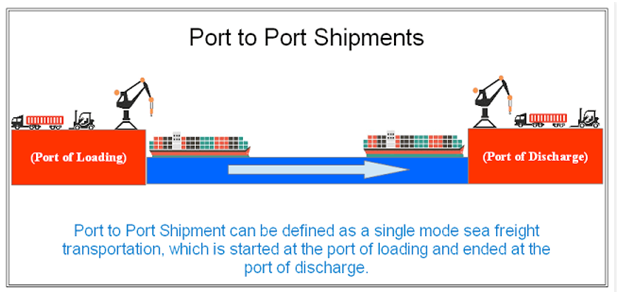
This port-to-port delivery service is the most economical way to ship, and it’s mostly for customers who already have experience and are able to ship the goods to one of the designated ports or terminals in Australia, and also pick-up the goods from the port/terminal. We will provide you with an empty container, booking number, and pick-up and delivery information.
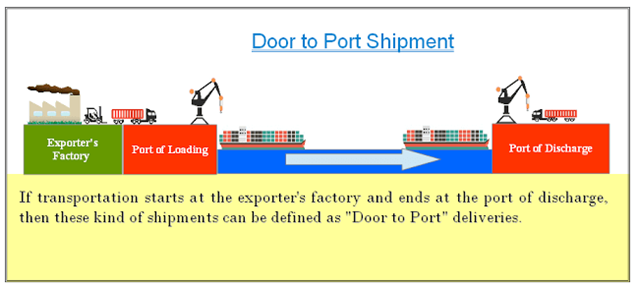
DTP is an efficient service and cost-effective way to ship good internationally. This process involves picking up your goods from your home or office and delivering them to your designated port. Your freight forwarder will notify you prior to your cargo arrival to the port of destination, and will help you to clear customs and to process required paperwork.

Customers who use this service are usually companies that purchase cargo in Australia from the Chinese manufacturers. The Chinese manufacturers usually include the cost for shipping to the port in their merchandise invoice, helping you avoid the inland transportation of your cargo.
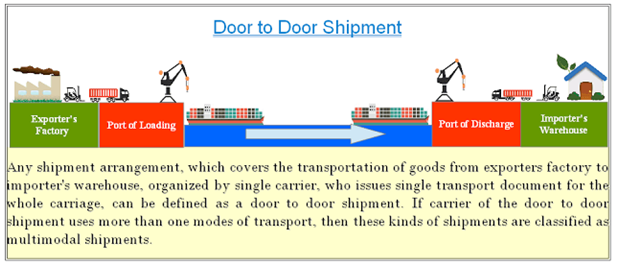
In the door-to-door delivery service the freight forward company will pick the goods from the warehouse and bring it to your location. This service usually includes trucking as well, and there will be additional charges on your invoice.
Major Ports
Shipping ports in China
Usually, your supplier or freight forwarder will tell you which is the best port you should consider for exporting your goods from China to Australia. They base on your location, transit time, costs, ease of customs clearance, and on any other agreements you made with them. But if you want to choose the port on your own, you should take into consideration these essential elements that contribute to successful shipping: costs, location, and transit time. However, keep in mind that the geographical location of your vendor isn’t something to pay much attention to because no matter where he is located in China, your goods will never be too far from one of the ports listed below. These are the world’s largest and most productive ports that are ready to ship your goods from China to Australia:
Top Ports in China
The Port of Shanghai (Port code: CNSH) – Is the world’s busiest port; opened for international trade in 1842, but it dates back to the 6th century, and it has a volume of 42 million TEUs (Twenty-Foot Equivalent Unit) in 2018.
Ningbo Port (Port code: CNNGB) – It shipped more than 26 million TEUs in 2018, and it reaches over 600 ports in more than 100 countries.)
The Port of Shenzhen (Port code: CNSZX) – It shipped more than 27 million TEUs in 2018, and includes multiple port terminals in Shenzhen City, Guangdong.
Other ports are: Tianjin port, Qingdao port, Xiamen port, and Hong Kong port.
Shipping ports in Australia
These are the top ports for importing into Australia:
Port Name: Sydney
Port code: AUSYD
Port Name: Melbourne
Port code: AUMEL
Port Name: Brisbane
Port code: AUBNE
Port Name: Adelaide
Port code: AUADL
Sea freight is the most economical way of sending large volumes of goods internationally, and the main mode of transportation. If your delivery is not particularly time-sensitive (perishable goods), then we would recommend you to use sea freight as a viable alternative to air freight or door-to-door courier services.
• Shipment Type –LCL/FCL
Less Than Container Load (LCL)
If the quantity of your goods is small and its volume is less than 15CBM, the freight forwarder will help you ship your goods by LCL. This will enable importers to ship smaller amounts of cargo, which doesn’t have the right volume to make Full Container Load a viable option. This means your cargo is combined with other shipping cargos for the same destination.
When LCL goods arrive at ports, they can be delivered by truck or by express companies because of their small size and relative flexibility. LCL uses CBM (Cubic Meter) as the measurement unit to calculate the freight cost.
Full Container Load (FCL)
FCL refers to when the quantity of your goods is large enough that it can be put in at least one container. In this case, the freight is calculated on an FCL basis. FCL shipment will be loaded and sealed at origin by your supplier, then shipped to your final destination.
When it comes to size, there are three types of containers 20 ft. (33 CBM), 40 ft. (66 CBM) and a 40 ft. high cube container (76 CBM). he 20 ft. containers are designed to carry more weight such as minerals, metals, machinery, sugar, paper, cement, etc., while the 40 ft. containers are designed to carry voluminous cargo rather than heavy cargo, for example, furniture, steel pipes, paper scrap, cotton, tobacco, etc.
Note that when FCL goods arrive at an Australian port, it can only be delivered by truck due to its large size.
• Packaging
In sea transportation, sometimes your goods will be stacked in a container for a month or even more, and because of this you should pack your goods accordingly to keep them protected from the factory to the loading port warehouse, then to a discharge port warehouse, and finally on a truck to your destination. And because the goods have a long way to get to you, you should always make sure that your export packaging is up for the task.
Your package should have – 5 layers of inner carton, 5 layers of outer carton, plastic wrapping on the outer carton, IPPC ISPM 15 Standard Pallets, and the Freight Remark printed on the outer carton.
Common pallet size:
• For Europe – 1200*1000mm or 1200*800mm,
• For Australia – 1140*1140mm,
• For the U.S. – 40*48inches (1016*1219mm).
It is better to provide your shipper with clear and explicit packaging specification because they can make mistakes that can cause damage to your goods. And also provide them with graphical examples whenever possible.
• How Long – Transit Time
Estimated Transit Time (ETT) is the time between the Estimated Time of Departure from origin (ETD) and the Estimated Time of Arrival at the destination (ETA).
In order to give you a reference, I have compiled the transit time from the major Chinese ports to the Australian ports. I hope this helps you.
China Port Australia Port Transit Time (days)
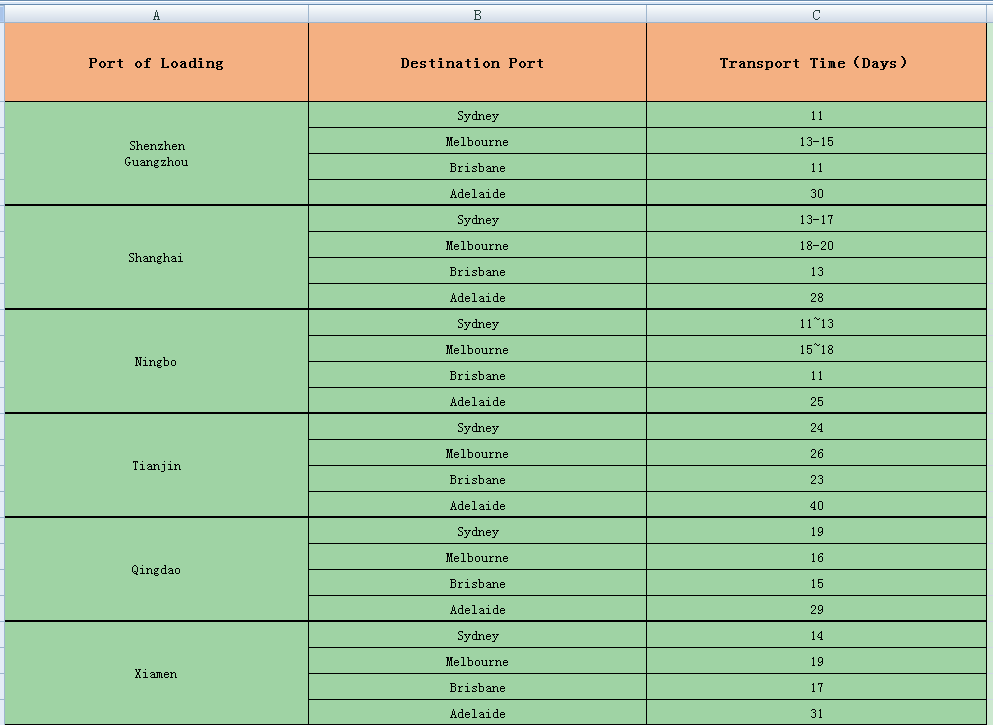
ETDs and ETAs are subject to change at any time and they can never be guaranteed by your sea carrier, and it can take up to 7 days for your cargo to be loaded at the loading port.
Sea transportation is a slow mode of transportation, and you need to do your planning in advance and have generous margins for the possible delays. Besides, Chinese manufacturers don’t stock any products; the products are made them to order.
In other words, if you need your goods to be ready for the Christmas season, you should plan ahead and place your order in August or earlier. We would recommend that you should place an order with at least 3 months in advance.
• Freight Cost Overview
90% of the trade is done under these two terms:FOB (Free On Board) and EXW (Ex-Works). Because CIF (Cost, Insurance, Freight) and DAP (Delivered-at-Place) are both carried out by your seller, it will take away more of your time and expenses.
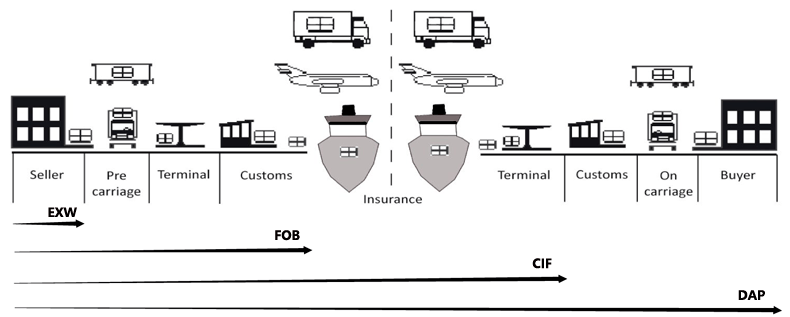
Therefore, you should chose FOB or EXW and leave your goods in professional hands, at the lowest price and the fastest shipping time. Doing so you will save money and valuable time!
1. EXW represents just the product cost, and you will have to ship your goods by yourself to the port of the shipment because they won’t help you.
EXW Shipping cost = Cost for sea freight from the Chinese port to the Australian port + Australia’s customs clearance cost + Local logistics cost in Australia.
2. Because with EXW they will not help you ship your goods, the part of sea freight you will need to pay is:
FOB Shipping cost = Local logistics cost in China + China export cost + Cost for sea freight from the Chinese port to Australian port + Australia’s customs clearance cost + Local logistics cost in Australia.
3. Other charges:
• Customs clearance and documentation;
• Local port charges (Australia);
• Customs entry;
• Delivery charge;
• Picking up fee and Warehouse entry;
• Insurance.
• Track and Trace – Container Tracking
Sometimes your shipment arrives later than scheduled, and this might happen because of the bad weather, port congestion, routing change, etc.
Knowing the most accurate ETA and where your shipment is located (both are provided by Cargo tracking and trace system), will help you get prepared and notify every party involved.
Also knowing which shipping line is transporting your cargo, container number, booking number, or document number, will help you track your container.
You can easily find all the information on your Bill of Lading. The booking number and B/L number are listed on the top right, and the container number is usually under the section of “Marks & Numbers”.
Bellow we provided you with an example of how a container number looks and what it contains.
In our example “U” stands for general freight containers. Other letters are:
J – Which means detachable freight container-related equipment;
R – reefer (refrigerated) containers;
Z – Stand for trailers and chassis.
Here is an example of how the trace and track system works: If your shipment was shipped by MSC, you can access their official website to track your container.
Tracking retrieved from https://www.msc.com/
After you have inserted your Container number, you can get your cargo track clearly and easily.
1. Air Products
Air transportation is suitable for goods that are urgent in time, or the unit price of the goods is high, but the quantity of the goods is small (300-500kg).
Shipping time for air freight is represented by the time required for booking shipping space, flight time, and local delivery time in Australia.
With this mode of transportation, the delivery time and price are more flexible than sea freight because you can choose non-stop transfer or charter services, with different airline routes. In general, experienced freight forwarders will divide the air freight from China to Australia into three categories:
a) Economic air freight: Delivery time is 6-12 days, economical price, suitable for goods with low time requirements (no dangerous goods, oversized or temperature-controlled goods).
b) Standard air freight: Delivery time is 3-6 days, reasonable price and a shorter time.
c) Emergency air freight: Delivery time is 1-4 days, speed priority, suitable for time sensitive goods (perishables).
2. Air Freight Cost and Weight
The unit of calculation for air freight is kilograms. But do you think that large volume and small weight will take advantage? Then you think too simple. Because the major airlines have a uniform standard: actual weight and dimensional weight, according to the largest value. There are two methods for calculating the weight of air transport, one is to charge according to the actual weight of the cargo, and other is to charge according to the dimensional weight.
This method of calculating shipping costs is similar to express. The difference is that for express transportation the volume is divided by 5000, and for air transportation the volume is divided by 6000:
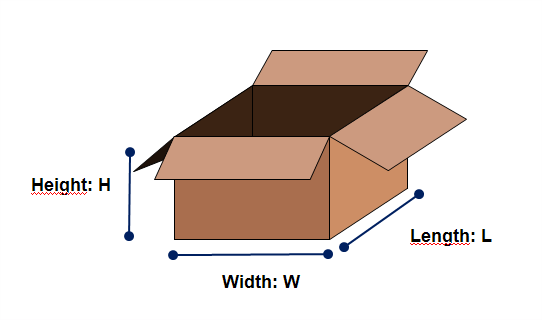
Standard air transportation – dimensional weight calculation method
Dimensional Weight = Length (cm) x Width (cm) x Height (cm)/6000
I will give you an example for foam with standard air transportation.
Let’s suppose you need to ship 1 piece of a large 100cm x 100cm x 100cm foam that weights 20KG. What will be its dimensional weight?
Let’s calculate – Dimensional weight = 100 cm x 100 cm x 100 cm/6000=167 kg
So, you see, its dimensional weight is far larger than its actual weight.
Hence you will be charged for 167 kg.
For express transportation the formula is:
If your product package size is 50*50*50 cm and the actual weight is 10 kg, the express company will charge you 25 kg weight (50*50*50cm)/5000=25 kg) instead of the actual weight of 10 kg, if you want to ship this package from China to Australia.
International transport and logistics companies are based on the maximum value they can charge. For example, freight carriers like USPS, FedEx, or UPS calculate shipping charges based on whichever number is greater (actual weight or dimensional weight).
You will find that packing your goods skillfully and minimizing its volume, it is often the key to saving money. And also, by finding an experienced freight forwarder, it will help you come with the ideal solutions for shipping from China to Australia, and will save you money and time.
3. Air cargo tracking
AWB is a track and trace service and it stands for air waybill or air consignment note. This is a receipt and an evidence of the contract of carriage issued by the international airline. In other words, it is a document of title to the goods, and it has a unique number. This unique number can be found in the head section and by submitting it on the airlines official website track & trace page, all your updated information will be available.
The AWB format is:
2 letter airline code – 123 (3 numbers as prefix) – 12345678 (several numbers).
Tracking & Tracing retrieved from https://www.track-trace.com/aircargo
Other carriers will provide the “email alert” service, which is a free service that will let you know when the goods are moved, and you should take advantage of that.
1. The advantages of express shipping
Express shipping is the fastest and easiest mode of transportation from China to Australia, when compared to sea or air freight. With express, you won’t have to worry about duty payments and customs clearance. You will also be able to track your goods at any time and plan accordingly.
Therefore, find an express company with a reasonable offer and wait for your goods to arrive at your door.
2. Express Service Process
Each freight forwarder has its own set of operating procedures. Here I will only introduce my company’s procedures. I hope something will inspire you.
1. Fill and submit the quote with your shipping information.
2. We respond within 12 hours.
3. If you don’t like our terms, we can discuss more until we come to an agreement.
4. We will book the space from the carrier after we have contacted your supplier and rechecked everything.
5. You won’t have to worry about the inland delivery to out warehouse. We or your supplier will arrange that.
6. We will communicate to you the chargeable weight.
7. You will pay the costs.
8. Your shipment will be delivered to the courier (DHL, FedEx, UPS, etc.)
9. Wait for your goods to be delivered to your door.
We will track your shipment and keep you updated until you receive your goods. Overall, we will help you reduce the costs, improve your services, minimize the delays, and raise your performance.

3. Type of products that are suitable for express shipping
All courier companies use air freight to transport goods, so the delivery time and price will be flexible.
There are many famous courier companies, regulating the Express companies like FedEx, UPS, DHL, and many other.
Express shipping means urgent and faster delivery, with higher prices and rates than other forms of transportation. Also, the cost of express shipping may increase during the holidays, but it can drop dramatically in the off-season.
To save money, cargo agents or freight forwarders are the best option when you are looking for solutions for shipping from China to Australia because they can find you an express company that gives you a reasonable price, and they can also get a discount price that you won’t find on their official website.
d) Economic air freight: Delivery time is 6-12 days, economical price, suitable for goods with low time requirements (no dangerous goods, oversized or temperature-controlled goods).
e) Standard air freight: delivery time is 3-6 days, reasonable price and a shorter time to reach you.
f) Emergency air freight: Delivery time is 1-4 days, speed priority, suitable for time sensitive goods (perishables).
Express delivery has many advantages. The unit price is usually higher than transportation by sea and air, but it all depends on your product needs.
If your shipment is a sample or, a small package, or even a letter, then don’t hesitate to choose express. This method is simple and fast.
Your freight forwarder can help you find the best solutions for shipping from China to Australia and save you money and time, even if the quantity of your goods is slightly larger, but should be less than 500 kg.
4. 6 tips from practical experiences
No matter how far around the world they are travelling, always choose the most trusted courier companies because this will guarantee that your documents, sample, or parcels are in good hands.
But as you know, different destinations and unlimited weight/volume data will make it harder for many basic rules to sum up. Here are a few tips:
1. First of all, find a freight forwarder who will help you to find solutions for shipping from China to Australia. We hope it would be us!
And as you may know, the prepaid service is cheaper than the “collect” service. To save money on courier shipping, you should choose the prepaid service through a broker, which is the super VIP of the carrier.
2. DHL vs. UPS in general:
• If your goods are up to 5.5 kg, DHL will save you money;
• For goods that are between 6 and 21 kg, UPS wins;
• For goods that are between 21 and 100 kg, DHL wins;
• And for goods that are over 100 kg, UPS will save you money.
3. When shipping from Southeast Asia, FedEx is the king no matter the quantity (small shipment or larger shipment).
5. In general, big businesses pick one carrier and stick with him because it has bigger discount on pricing. Small businesses and medium businesses tend to work with 2 or more carrier companies to maximize their costs.
6. The total length of the package should be less than 330 cm. Total length formula is: length + width*2 + height*2. And for the best price offer, the weight should be less than 70 kg per package.
7. Always take extra care of the packing quality and use reinforced cartons for your goods to keep them safe.
Sometimes the delivery time can differ with a day or two, but in general is always fixed, and no freight forwarder can offer faster shipping than others.
Here is a list with things you can do to avoid getting your shipment delayed:
a. The declared customs value must match your commercial invoice and bill of lading. Always make sure that that information is correct.)
b. Make your orders according to the FOB terms, and make sure your supplier prepares all the documents in time (the export clearance documents.
c. Don’t wait until the last day your goods are ready to ship. Ask your forwarder to contact your supplier a few days before.
d. Buy a customs bond with at least one month before the goods arrive in the Australian port.
e. Always ask you supplier, and be specific, to use high-quality packaging, to prevent your goods from being repacked before shipment.
f. In order for your shipping documents to be completed in time, always pay the balance and freight cost on time.
You can also consider splitting your shipping in two, if you are running late. One part (let’s say 20%) is delivered by air, while the rest (80%) is shipped by sea. Thus, you can stock up just one week after the production run is completed.
Once your cargo enters the Australian port or airport, you face customs inspection and clearance processes. This is a job that requires advance preparation and rich experience. Three of the things you must know are: document checklist, inspection process, and HS Codes and taxes.
First of all, you have to get an authorization from the Australian government because otherwise you cannot perform international trade.
1. Commercial Invoice
2. Packing List
3. Bill of Lading
4. Customs Bond
5. Arrival Notice
6. Commodity Specific Documentation
7. Import license (if required)- needed for certain goods
8. Certificate of origin
9. Proof of import – it is granted by customs officials
10. MSDS document – if you are shipping hazardous goods
HS Codes (The 10-digit Harmonized Item Description Code) – This is the most important thing that all importers must know when importing goods. Almost every time you import an item, you need to know the HS code of the item. You can get this code from your supplier.
Taxes – After you’ve confirmed your HS code, you can check your goods tariffs for free here: https://ftaportal.dfat.gov.au/

Then you can see :

The coordination system is a large encyclopedia of product descriptions, covering all imaginable products.
Import Duties Payable in Australia
The majority of goods that are imported into Australia are subject to customs duties and 10% GTS (goods and services tax). Australia has many different regulations, and sometimes, complex duty rates apply to the imported goods.
• Self-Assessed Clearance (SAC) for goods under $1000
If the value of your goods is under $1000 (except goods that arrive by post) you will need to submit a SAC declaration in order for the goods to be cleared by the Australian Customs and Border Protection. Your freight forwarder or customs broker can make the Self-Assessed Clearance declaration on your behalf on a service-based fee.
• Customs Clearance with a value over $1000
If the value of your goods exceeds $1000 you will need to complete and submit an Import Declaration (form B650), not matter if your goods are imported by sea, air, or post. In order for the goods to be cleared by the Australian Customs and Border Protection (CBP), besides Form B650, you will need to pay the duties, GTS, and other taxes and charges that might apply.
1) Who can make an Import Declaration?
An Import Declaration represents a statement, and it is made by the owner of the imported goods. According to customs laws, the owner of the imported goods can be the importer, someone who has beneficial interest in the goods, someone who has control over the goods (such as the freight forwarder or Customs broker), or someone who holds themselves out to be the owner of the imported goods.
2) Who can act on your behalf?
You freight forwarder or Customs Broker can deal with the Australian Customs and Border Protection on your behalf. Brokers work on a service-based fee.
Duty Tariff Concessions for Importers
The local industry is supported by the Customs through a range of programs. One of those programs is the Tariff Concession System, and may affect Australian importers or local manufactures.
1. How does the Tariff Concession System work?
This system is a mechanism for granting a Tariff Concession Order (TCO) on the imported goods if there were no substitutable goods produced in Australia at the time TCO was lodged. The substitutable goods are represented by the Australian made goods used with the same purpose as the imported goods.
2. How do I apply for a TCO?
If you are applying for a TCO for imported goods you must complete all information required on the form. Failure in meeting all the requirements may result in delays or even rejection. TCO form is available at the Customs offices.
3. How quickly will my application for a TCO be processed?
The Customs will analyze the application to ensure it is valid, and if accepted, will be published in the Commonwealth of Australia Tariff Concessions Gazette within 28 days. From the date of publication, within 150 days, the Customs is required to make a decision on each application. Late replies would not be considered in the final decision, so it’s important to provide all the information on time.
According to Australian CBP, physical examination occurs regularly to ensure that the information provided to Customs and Border Protection is correct and to:
• detect prohibited and harmful goods (such as drugs, weapons, and other goods),
• detect smuggle goods,
• protect legitimate industry from non-compliant importers and exporters,
• improve the security of sea cargo trade in Australia,

With the continuous rise of e-commerce business, shipping from China to Amazon in Australia has become very popular. But this process is not simple; every link is directly related to the profit of your Amazon business.
Of course, you can entrust your supplier to ship the goods directly to your Amazon address, which looks simple and convenient, but they will also have to contact a Chinese freight forwarder to transport your goods. The difference in the middle is also a large fee, and when you ask about the status of your goods, they often respond slowly.
In the following, we will mainly share what you should know when you choose to use freight forwarding, or what kind of requirements can you ask them.
1. Require picking-up or to consolidate your goods
In order to make it as convenient as possible, your freight forwarder will contact your supplier, pick up the goods to their own warehouse, and help you store them until you need them. Even if your goods are not at the same address, they will collect them separately, and then send them to you in a unified package, which is a time-saving and labor-saving choice.
2. Product/goods inspection
When doing Amazon business, your reputation and free from damage products is what matters. When you are shipping from China to Australia you will need a cargo agent to do one last inspection of your goods (in China). All requirements can be met, from the inspection of the outer box, to the quantity, quality, and even product photos or other needs. Therefore, you need to keep a clear line of communication with the freight forwarder as much as possible to ensure that your products are delivered to the Amazon center safely and and in time.
3. Amazon preparation services such as labeling
If you are a new e-commerce seller, then you need to rely on the additional services of a freight forwarder because Amazon products always have their own rules.
Cargo agents often have years of experience and will ensure that your product meets Amazon’s requirements. And doing these preparations in advance, such as FNSKU labeling, packaging, poly bagging, bubble wrap, and so on, in the Chinese warehouse, will save your costs greatly.
4. Choose your shipping method.
According to the weight, size and delivery time of your goods, the flexible choice is suitable for your mode of transportation. You should choose the mode of transportation of your goods according to the weight, size and the delivery time.
When you go to Amazon in Australia, you should understand the advantages and disadvantages of each mode of transportation, whether it is air, sea, or express, or let your freight forwarder recommend it to you, so you won’t lose money and valuable time.
Customs clearance and various documents may sound complicated, but as an Amazon seller, you should focus on improving your Amazon business, and handing these shipping burdens to a reliable Chinese freight forwarder for shipping from China to Australia, is really the best choice!
There is an increasing number of goods being imported from China, and for global sellers, purchasing from China is more economical than other countries like America or Europe (it includes shipping fees also).
China is the world’s largest exporting county and the trading partner of most Asian countries. No wonder foreign investors and growing startups businesses are interested in droppshiping from China.
The dropshipping business module help sellers reduce costs and increase their profits, becoming more popular than before.
Recently, numerous entrepreneurs have chosen to cooperate with dropshipping websites in China.
If you are an e-commerce seller such as Shopify, inventory and order management may take a lot of your time. And then, the dropshipping service came into being, so you can cooperate with a professional and experienced freight forwarder.
Store the goods (large or small) in your agent’s warehouse; they have their own system to interface with your e-commerce platform. So once your order is generated, the agent will immediately help you to ship the goods to the client, according to his needs. For speeding up the process, logistics and customs clearance are included.
You may need a warehouse service during shipping from China to Australia. So what can warehouse services do for you?

1. Central Location Storage Space
No matter what your reasons are, storing your goods temporarily in a securely managed warehouse, long or short term, is a good choice.
Warehousing services provide a central location storage space for receiving, storing, and distributing goods (in general). After the shipment arrives at the final destination, the warehouse service providers will handle the goods transfers because it’s their responsibility. After the shipment has been transferred to the warehouse, the warehouse service providers will sort the goods and dispatch them to the temporary address. When the time to move the goods comes, each order will be retrieved, grouped, packaged, and checked, before sending it to their new destination.
2. One-piece delivery (e-commerce order fulfillment).
If you are an e-commerce seller, such as Shopify, then you can choose to store the goods in the warehouse. Once the order is generated, the warehouse will directly help you ship to the client based on your customer information. This will speed up your business.
2. Consolidating your goods:
If you have suppliers in many different locations in China, then you need to integrate all the goods into the warehouse, wait for all the goods to arrive, and then send them to you uniformly. This is a time and money saving option.
4. Amazon preparation and other customized services
First transport the goods to the warehouse of the freight forwarder, they will perform basic outer box inspection, picking services, labeling, etc. for you, and can even customize your other needs, including Amazon preparation services.
Generally, freight forwarders have warehouse services in China and Australia. Choosing the country in which to store the goods, or using warehouses in two countries at the same time, depends on your actual situation. For example: warehouses and labor costs are relatively low when operating in China.
Carrying out such operations in China can save you a lot of costs and help you understand the situation of the goods early. Freight forwarders usually have warehouse experience, so you don’t have to worry too much.
Cargo insurance covers the loss or damage of goods during shipment, and applies to any mode of transportation (air, sea, or land). Loss and damage can occur on some occasions, even when freight forwarders, shipping lines, airlines, and truck drivers do their best to take good care of your cargo.
Is a type of insurance that covers or compensates the buyer or seller of the goods against cargo damage or loss of cargo.
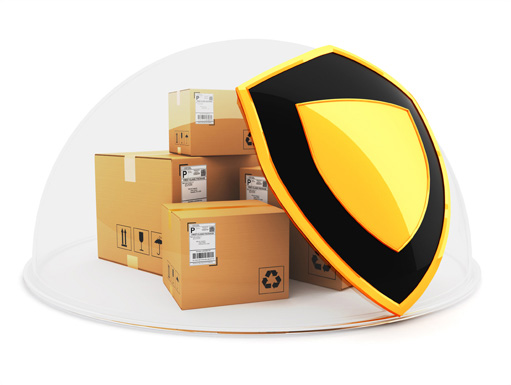
Your cargo has a long way until it gets to your country of destination. It will pass from hand to hand while loading and unloading from trucks and containers, through ports and inspection sites, and from a warehouse clerk to another warehouse clerk.
Each step is necessary for your merchandise to ultimately reach you, and having your goods move through so many checkpoints and hands increase the chance of damage.
We strongly recommend always getting cargo insurance to give you the peace of mind you deserve, and save yourself from a huge hassle of sourcing replacements for damaged goods.
It usually covers damages caused by weather, natural disasters, goods handling such as loading and unloading, piracy, and other related risks.
Federal law requires trucking company carriers to have some carrier liability insurance, but sometimes the minimum requirement may not be enough protection for your shipment. However, other carriers don’t have the same requirements.
These are the reasons we often recommend additional cargo insurance for our clients because it typically covers external causes of loss and damage to your shipment.
Common triggers for cargo insurance include:
If one of those common triggers caused damage to your cargo, and your cargo is covered by the insurance, they will pay the amount you have ensured it for.
Like any other insurance type, freight and cargo insurance policies have exclusions. These policies eliminate the coverage for certain perils.
Individual freight insurance policies typically exclude:
In the shipping world, there is no standard insurance from, so exclusions and inclusions might vary widely.
Always set aside time to understand the insurance you are working with and never hesitate to ask questions regarding your shipment.
By now, using the guidance and the information given above, you must have chosen an appropriate mode of transportation for your goods.
When shipping goods, the cost of freight is an essential part, if not the most important, of the expenses of your business. Choosing the right mode of transport for your company, understanding how the freight moves in the supply chain and optimizing the visibility of the supply chain will help you save money. To save even more money, you will also need to develop other business skills, which will be discussed below; after all, transport costs are a key factor in the transport system.
Do not leave your large shipment to the supplier unless there is no other choice because costs consist largely of the logistics, and most sellers make this mistake thinking that is the simplest and fastest thing to do – to leave the shipment to the supplier.
Instead, the best thing to do is to choose a carrier who is on his own side because is the only way to ensure control over the shipment. But plan this ahead because sometimes, in the middle of the peak season, due to capacity problems, it will be difficult to get a seat with the shipping companies.
In international transportation, you always have to plan your shipment in advance because the delivery time of your goods is the crucial factor that decides the mode of transportation. Also knowing the holidays’ schedule in China and important shipping deadlines and guidelines will save you time and money because in those peak periods the shipping prices will rise sharply due to a shortage of factory and road staff and the factories are closed.
In general, transportation costs increase in the following periods:
– Chinese New Year – Factories and facilities shut down in this period, and it’s causing price spikes and delays;
– Golden Week – This week-long festival exacerbates holiday season price spikes and delays,
– Dragon Boat Festival – for this holyday businesses typically close for three days,
– Holiday Shopping Season – Prices rise steadily over months as businesses prepare for holiday shopping (October-December for air freight), July-October for sea freight).
When transportation is relatively flat, the price will be more competitive — for example, every year after the Chinese New Year and also from March to April.
We all know that sometimes is hard to find a reliable business partner.
Ensure that your logistics partner is getting the best prices from air freight companies, steamship lines, and truckers. Check whether your logistics partner has multiple ocean carrier contracts available. If your logistics partner has more than one carrier choice available, you will have a higher chance of getting your cargo on board as cost-effectively as possible. If they have multiple carrier contracts, they can always find an alternative option to transport your goods.
Consolidating your cargo is important especially if the goods are being bought from different suppliers.
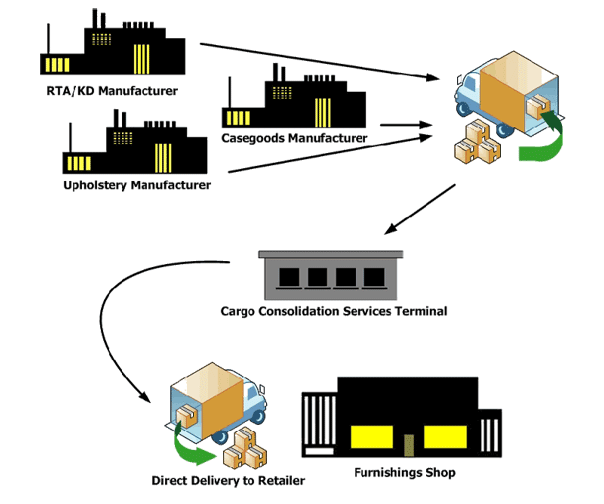
The logistics company can provide a consolidation process at any port of origin, where goods from different suppliers can be stored and delivered to you together.
If air freight is too expensive, but sea freight cannot be delivered in time, you can cooperate with your freight forwarder. He can offer you the option of multimodal transportation combining air freight and sea freight with other forms of ground transportation (trucks, trains, or some other mean of transport) for the delivery.
Multimodal transportation also known as combined transportation is the transportation of goods with at least two different modes of transport, under a single contract. Legally speaking, the carrier is responsible for the entire transport, and he does not have to possess all the means of transport. . This mode of transportation might induce certain costs for transshipments and handling, but it also comes with many advantages such as centralization of responsibility in one transport operator, economies of scale in transport negotiations, use of international experience in transportation, in the field of bureaucracy and commerce, better use of available infrastructure and more efficient means of transport, focused on cost reduction, and reduction of indirect costs.
Experienced freight forwarders can often find a way to achieve this goal in their communications. This hybrid approach delivers products within the right timeframe and retains the budget for the delivery of your goods.
International transport may be a complex mode of serious shipping or it may be an easy way to move freight from point A to point B choosing the most cost-effective and timely mode of transport is crucial. It is advisable to explore the various transport options with your freight forwarder to ensure that you ship your cargo at the lowest overall price.
We recommend you to find a reliable freight forwarder for shipping from China to Australia to take care of your shipping.
Many companies choose to let their suppliers handle the packing. To save money you should get involved in the packaging process by asking the suppliers if they have ways to improve this process, because when it comes to shipping via ocean, weight doesn’t matter, only the space the cargo occupies.

Rayssun Logistics is an experienced, reputable Chinese freight company specialized in shipping goods from China to Australia.
We have an excellent reputation for shipping, airline connections, and good customs reputation, and we are known for offering competitive pricing and timely delivery to capture the market in the freight forwarding industry.
At Rayssun Logistics, we believe that the customer’s gain is our gain. Establishing long-term relationships is the key to our success. Our principle of work is to place the customer first, together with our main values of integrity, honesty, and taking responsibility. Learning and growing have led us to be particularly successful both in shipping from China to Australia and in the international transport sector as a whole.
Our experts are ready to start your worry-free shipping journey, click here for more information, quotes, and offers.
